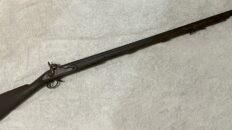1. Introduction
1.1 The purpose of this document is to provide comment and information in relation to the Draft Firearms Amendment Regulations 2017 as it applies to Shooters Union members in Tasmania.
1.2 Author – Jan Linsley, Shooters Union Australia Inc
2. Intended Audience
Legislation Development Review Services, Tasmanian Police The Honourable Rene Hidding – Minister for Police and Emergency Management.
Members and Branches Shooters Union Australia Inc
3. Authority to comment
3.1 Shooters Union Australia Inc was formed consequent to the formation of Shooters Union organisations in several states, the first of which was Queensland in 2005. SUA has several branches and individual members in all states, including Tasmania.
3.2 The Shooters Union movement has grown rapidly and is now one of the largest shooting organisations in Australia.
3.3 Shooters Union has been represented at several intrastate advisory groups over recent years.
4. Background
4.1 The objectives of the proposed regulations, as outlined in the Regulatory Impact Statement, do not provide evidence of the need for change of existing regulation, apart from the fact that the existing storage requirements are the same as they were 20 years ago. If no quantifiable and credible benefit can be provided, then change for the sake of change is no reason at all.
4.2 The Regulatory Impact Statement (RIS) provides a chart which shows that firearm thefts have risen over the last 10 years and provides an average of 200 firearms a year. There is no source reference in the chart or in the statement. It is interesting to note that the report talks principally about the number of firearms stolen, not the number of thefts. When other items are stolen, eg jewellery, statements are made as to the value of the theft (which is counted as one theft), rather than a catalogue of how many rings, how many necklaces, how many watches etc. In the case of
jewellery, it is recognised that if someone gains access to a source of jewellery, all of the jewellery that is in that source will be stolen. That’s one theft. If a thief gains access to a source of firearms, each individual firearm is considered to be one theft when in fact, like jewellery thefts, all the firearms at the source are likely to be stolen when access is attained. This is particularly evident when the RIS states that there were 125 firearms stolen in 2006-2007, increasing to 260 stolen in 2015-2016.
The RIS makes the case that the increase of stolen firearms in the past 10 years in unacceptable. However no information is provided to relate the increase in the number of firearms held by licensees to the increase in the number of stolen firearms. We would suggest that the number of firearms held has increased as it has in other states, so by what percentage in relation to that has the number of thefts increased?
The graph provided indicates that in most years, there were more firearm theft incidents than there were firearms stolen. One can only assume that most years, there are quite a number of unsuccessful firearm thefts ………
4.3 There is no information provided to say how many thefts were from metal or timber storage facilities not now considered adequate. It is difficult therefore to see why it is considered necessary to legislate on thickness and material for firearms storage. Research presented to the Senate Inquiry in 2014 indicated that most firearms were stolen from police and security.
4.4 The often stated problem of stolen firearms being used in criminal offences is not borne out by the facts. Almost all stolen firearms are never recovered and not used in crime either. They are largely resold to people who (apart from their willingness to purchase an unregistered firearm) are not normally criminal and certainly not violent. Less than 1% of firearms stolen in a year will be used in a crime or associated with an offence. There is no evidence of a link between stolen firearms and crime.
The Australian Institute of Criminology states: “Very few stolen firearms are known to have been used to commit a subsequent criminal event or found in the possession of persons charged with other serious offences, eg supply of a prohibited drug.”
The Herald Sun reported in 2013, that police suspected that 25 major shipments of firearms not detected by Customs, had been imported into Australia illegally over the previous years. It was further reported that magazines and speedloaders were discovered by Customs officers acting on a police tip off, but that about 20 similar packages had been successfully imported.
Customs reports that the sheer volume of international mail makes it difficult to detect illegal imports without other intelligence. Likewise only a very small proportion of containers are inspected.
4.5 As stated in the RIS, most metal gun safes will comply with the proposed requirements, but we ask how many non-compliant storage facilities have been the subject of a theft of firearms? The figures quoted of an average of $300 per licence holder is based on invalid assumptions. If there are figures on how many safes are currently not compliant, they are not provided. Without this information and information on how many firearms each non-compliant licence holder has, the estimate of $300 per licence holder is completely meaningless. It also ignores the
fact that a $300 safe is probably the minimum price for a safe which holds a minimum of firearms. We could just as well estimate that non-compliant storage may reduce the number of firearm thefts because they don’t look like gun safes and therefore may be overlooked by thieves not recognising the contents from outward appearance.
4.6 The proposal to regulate the thickness of metal for storage of ammunition is a massive cost impost, likely to affect ALL licence holders. There is no evidence presented to support a view that current ammunition storage requirements are not adequate. There is no evidence at all about theft of ammunition from existing storage. What is the size of this problem that the legislation seeks to address? Is it, in fact, a problem now?
4.7 The RIS talks about “community expectations”. Never have we seen any evidence of what community expectations are. Nor is there any evidence provided in the RIS. The phrase is nebulous at best and deliberately misleading at worst. 4.8 The RIS informs us that of 61 firearm theft incidents in Tasmania in 2015-2016 where the firearms were stored in a safe, on 13 occasions the whole safe was removed, which resulted in the theft of 50 firearms. All of those occasions would have involved time, effort and noise, which indicates that the owners were probably not home at the time of the theft. It also indicates that those storage facilities were secure. If the safes had been bolted down, it would seem that they may not have been stolen, but that of course, is impossible to know. It may well be dependent on how long the owner was away, whether there were neighbours or whether the safes were stolen from rural locations with no interruptions and little chance of detection.
4.9 It is reasonable to require that firearms storage be bolted down. Two bolts instead of one is not a great impost, however bolting to both floor and wall would seem to be unnecessary and very possibly counterproductive. Take for example, the case of a pistol safe. These are smaller and better mounted on a wall, rather than the floor. This requirement would make mounting at eye level illegal. Take also the case where safes are installed in unlined sheds or other outbuildings. A quick circuit of the shed by a thief would clearly indicate the likelihood of a gun safe bolted through the wall which may be otherwise undetected and ignored in favour of a break-in to the house. We would recommend bolted to either floor or wall with two bolts as being a practical and reasonable requirement.
4.10 Safes weighing more than 150 kg when empty would be the exception rather than the rule. Most safes are less than that.
4.11 The requirement for alarms and video surveillance is not practical. Companies which monitor alarm systems ring the owner when the alarm goes off. They do not ring the Police and are usually legally prevented from doing so, probably because of the incidents of false alarms (ie power failures, animals setting them off etc). Remote monitoring of the alarm therefore simply means that the owner is notified, however the system itself can be set up to immediately notify the owner. Since most thefts are from unattended premises, notification to the owner will prompt him
to notify police, who won’t respond because of a lack of evidence to indicate a real theft is occurring. Likewise an audible alarm is only as good as the ability to respond. Where a rural property is involved, there will be no response and nobody to hear the alarm. If there is someone available when an alarm goes off, how is that person to do anything about the theft without endangering himself? The availability of capable systems which start at around $300 does not give any indication of final installation costs, which would more than double that cost and be applicable to nearly every licence holder. Where is the evidence that a monitored or audible alarm can justify the enormous cost impost on licensed firearms owners? Where is the evidence that firearm thefts
in Tasmania result in increased criminal activity with the use of stolen firearms when the Institute of Criminology states that ” Very few stolen firearms are known to have been used to commit a subsequent criminal event or found in the possession of persons charged with other serious offences, eg supply of a prohibited drug”.
In the case of thefts from alarmed premises, only one of 76 thefts resulted in recovery of the firearms and that recovery resulted from video surveillance, not from the alarm itself. To require such a cost impost on firearm owners to achieve only one success is not a realistic expectation. Further, the provision of alarms and surveillance equipment did not prevent the theft. Who answered the alarm? From the information provided, nobody did. If the thieves had been masked, how would video surveillance have provided a solution? If all firearm licensees are required to have expensive video surveillance, you can be sure that thieves would commensurately increase their means of personal de-identification.
4.12 We note in the RIS in relation to Cost of Alternative Options, that implementing greater storage requirements “would result in higher costs to existing and new firearm owners (without specific proposals it is not possible to calculate any difference in costs), but the increased cost is not expected to result in firearm theft prevention and community safety increases proportionate to that increased costs”. Where is the evidence that these proposals will?
4.13 The Benefits of Change indicate that “the proposed changes should be a reduction in the number of firearms stolen, albeit forecasting the difference in numbers is not possible. This will reduce criminal possession and use of firearms, which in turn will contribute to fewer serious crimes involving firearms…..” The evidence from the Senate Inquiry is that most firearms falling into criminal hands do so by illegal importation. Customs itself reports “….that the sheer volume of international mail makes it difficult to detect illegal imports without other intelligence. Likewise only a very small proportion of containers are inspected.”
Targeting licensed shooters will not retrieve firearms that are currently outside the licensing and registration systems. It would seem therefore, that allocating more resources to Customs would be more likely to address the problem of criminal misuse of firearms.
4.14 Better policing would be more beneficial. What are Tasmanian police doing about the increasing theft of firearms? How are they responding to reports of theft? The draft changes to legislation as presented will mean that the victim of theft is more likely to be charged than the thief. This legislation provides enormous scope for just that reaction from police and evidence from other states indicates that charging the victim is the first response. Are Tasmanian police any different?
4.15 To state there would be no impact on competition by compliance with the new requirements ignores completely the costs of participation in competition and the significant impact the increased costs of compliance would have on virtually all competition shooters. Few shooters compete with only one or two firearms.
4.16 The RIS rightly acknowledges that “…..it is not possible to accurately forecast what the change in number (of thefts) will be”. Why then, have these proposals advanced to the draft stage when there is no evidence of benefit? All of the purported benefits are speculative and not evidence based.
4.17 The chart provided in relation to unlawful homicide gives no indication of how many of those homicides were committed using firearms stolen from firearms licence holders. In fact, it is probably not possible to even know. Why then is this erroneous information included in the RIS? It is deliberately misleading. The conclusion that the cost to licence holders will be much less than the cost of each homicide is completely invalid because there is no evidence that homicides will reduce at all. Further, the costs to the community are hidden in taxation, policing, compliance and other costs (ie indirect costs). The costs of compliance with this legislation are direct costs on a group of already proven responsible, legitimate, law abiding members of the community. It is unreasonable and irresponsible to indicate that the costs of homicide and theft should be borne by such individuals, particularly considering the poorly researched, erroneous and demonstrably false statements provided in the RIS. Further, the RIS quotes the Australian Institute of Criminology’s 2011 report: Counting the Cost of Crime. However the figures quoted are for the whole of Australia. If figures are not available for Tasmania only, then quoting this report is deliberately misleading.
5. Recommendations
5.1 That the requirements in relation to safes be implemented for all NEW safes. No retrospective application. In time, the requirements would be implemented with no additional costs to existing licence holders.
5.2 Any retrospective requirements to be funded by the Tasmanian government.
5.3 That all safes be bolted (twice) to the floor or wall.
5.4 Remove the requirement for alarms and video surveillance from individual licence holders unless the Tasmanian government is prepared to pay for them. The requirement for these items is a large cost impost for no quantifiable benefit.
5.5 Transfer firearms licensing to an entity other than police so that more positive policing time can be allocated to theft prevention and recovery.
5.6 Introduce a crime with substantial penalties of theft of a firearm.
5.7 Consider the promotion of the most effective deterrent in prevention of a home invasion: a pet dog. Tasmanian police could liaise with local Councils and the RSPCA to promote access to suitable pets. Since police around Australia already have dog squads, there is clear evidence that they see a benefit.
6. Conclusion
We are disappointed that the Regulatory Impact Statement is so lacking in quantifiable evidence, is speculative and misleading. Since the regulatory changes relate to the Act itself, it is clear that the Act has been introduced likewise without any evidence of a need for change and without any benefit being either properly investigated or supported by evidence or assessment.
Since theft is already illegal, no amount of added legislation will have any impact on the criminal activity. All we can therefore do when proposing or supporting legislation is to ensure that security is as rigorous and financially beneficial as possible. These proposals do nothing to realistically ensure security and in fact, will only provide police with innocent scapegoats, ie licensed firearm owners. None of the amendments in this draft address the criminal misuse of firearms. All they do is legislate more onerous and demonstrably ineffective security measures for the already law abiding firearm owner, who is not the problem. The legislation affects only licensees and creates an environment where the victim of theft will be charged with a minor offence because it is easier to convict the victim than it is to pursue and prosecute the thief. The only provision that we can support is the requirement to bolt safes down and even there, we suggest a modification
for practical purposes.
We ask that Tasmania takes the lead in introducing provisions that have demonstrable, quantifiable benefit with particular reference to cost benefit, and support legitimate licence
holders rather than creating criminals from victims!
Jan Linsley
Shooters Union Australia Inc
17/12/16





Add comment